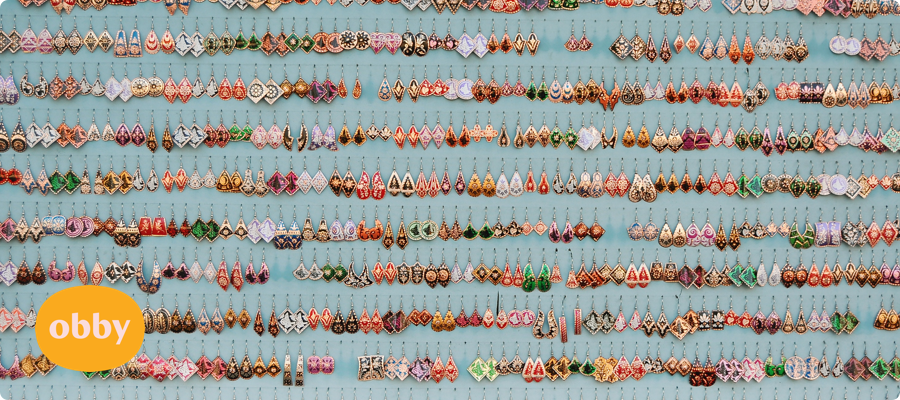
In jewellery making, there are so many different materials used to get different effects. Gemstones are the most popular, which are then set into precious metals, but you also find jewellery made just from precious metals or with other trinkets such as coins. However, jewellery can also be made from wood or material and in the modern day enamel and plastic is often used.
Other commonly used materials for jewellery design can include glass, shells and other animal materials including teeth, bone, ivory. The only material that cannot be used in jewellery, is lead. If jewellery contains lead, then the English Assay Office, the building which gives English jewellery it's stamp of approval (the Hallmark), the right to destroy it.
Beading is a popular method of jewellery making. Beads can be made of glass, gemstones, metal, wood, shells, clay and polymer clay. Beads have a little hole directly through the middle, meaning they can be threaded on a string or wire. They can be of any size and can make up pretty much any piece of jewellery. They are also used in embroidery and fashion, but beaded jewellery is popular in African and ingenious North American cultures as well as enjoying a revival in modern jewellery making in Europe. Beaded jewellery, although beautiful can often be a little more accessible, as you can purchase beads and the thread easily. Although some of the more intricate designs that you see require a lot of skill and mastering of the art, for more simple designs it is easily completed, making it more popular for beginners especially younger people who want to get into jewellery design.
Silversmiths and goldsmiths are the names given to jewellery designers and makers who work with silver and gold. This includes forging of metals, soldering, welding, cutting, carving and many other method which are used to assemble parts. Goldsmiths and silversmiths use heat in their work, so it comes at a higher cost due to the tools being expensive as well as the safety equipment needed to handle blow torches.
Many precious gems are used in jewellery, the most common probably being diamonds. They were first mined in India and diamond mines have since become huge sources of revenue for a lot of countries and areas including Australia, Botswana, Russia and Canada. However the diamond trade has, as anything involving that much capital, has become corrupt in some places. Diamonds mined in Angola, the Ivory Coast and Sierra Leone have been labelled as blood diamonds because they are mined during war and the capital gained from them has been used to finance insurgency.
Other gemstones are used in jewellery making including Amber. Amber is an ancient organic gemstone composed of tree resin hardened over time. To be classified as Amber, a specimen must be over one million years old. Emeralds are also a popular gemstone used. They are classified, along with Sapphire and rubies as the the most precious gemstones. They have a beautiful green to blueish colour and have been treasured throughout history. Jade is another gemstone commonly associated with the colour green but it can actually come in a range of colours, Jade is most popularly linked to use in Asian jewellery. Rubies, also used in jewellery making are famous for their bright red colour, and the most highly valued of gemstones. Of the three most precious gemstones, Sapphire comes last in value out of the three most precious gemstones, but remains popular because of it's bright blue colour. Organic gemstones are produced by living organisms, including pearls, coral and amber. Inorganic gemstones are generally composed from minerals.

